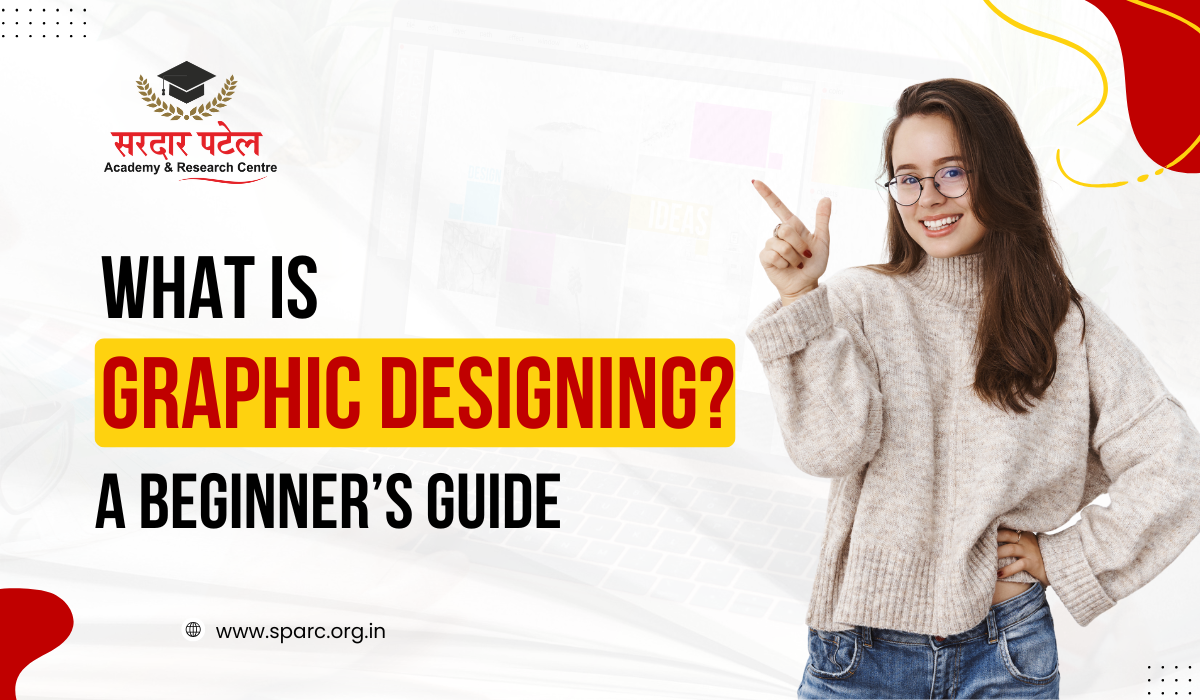
You must have heard that actions speak louder than words. In graphic design, visuals speak louder than anything. Whether it’s a social media post, logo, or Pinterest board. You must have appreciated the one you liked. And admired it without realising that you can also learn to create those things.
Graphic Designing is for everyone who thinks that they are creative enough to stand with the world and walk hand in hand.
So, if you are someone who loves exploring a career in creativity, then this guide is for you.
Graphic design is all about using visuals. It could be used for animations, to tell a story, or to share an idea. Visuals are easy for communication. Visually communicating ideas can be shown using text, images, color, shapes, and layout. Brands use visuals for promotion, and that’s how they grab the attention of people.
Through visuals, information is made easier to understand for everyone. In simple language, visuals even work as a language.
Back then, it was difficult to express emotions without speaking, but visuals have made this easier, and now emotions can be conveyed without saying a word.
From the logos to the posters, Graphic design is everywhere.
You can join Graphic Design whenever you feel creative enough to be a designer.
You just have to enjoy being creative and the ability to solve problems visually, even if you don’t have that, our institute is always with you.
This indicates that graphic design is a perfect match for you.
Graphic design might seem to you as a single term, but it includes many creative areas.
Procreate (iPad) – Loved by illustrators and digital artists
You don’t have to be a master of everything. You can always take your time. Start with the one you find the easiest
Put together a portfolio - All you have to do is save whatever you create. Over time, you’ll build a portfolio - a personal gallery that will show your capabilities. Don’t wait to be perfect. Every project counts, whether it‘s small or large.
Ask for feedback - start your project with no time and share it with your friends, relatives, or your SPARC instructors. Good feedback from someone who is an expert in this field will help you improve and see things from new angles.
Think of Graphic Design as a gate pass or a doorway to unlock many exciting careers. Let me list them for you.
You might be worried that in the future, AI will take your jobs in graphic design, but the reality is that AI is made to help graphic designers with a more creative approach.
Tools like Canva AI are built to help graphic designers design faster and smarter.
But what will make your designs still yours? That will be your ideas and decisions. Always think of AI as a helpful assistant - not a replacement.
Graphic Designing today stands as a mixture of everything that includes creativity, strategy, and tech. Whether you’re designing logos, websites, animations, or posters, it’s a career full of possibilities and exciting opportunities.
At SPARC, we are here as an institute to take your first steps with the right tools, hands-on practice, and guidance. We are not just teaching, but irl we’re helping you unlock your potential career.
Final thoughts
One thing you should always keep in mind is that anyone can learn design with time, patience, and passion.
You can start from wherever you are. Create things. Improve. And most importantly, enjoy the process.
From the beginning of your career and starting with the job, sparc is here to help you grow as a graphic designer.
No FAQs available.